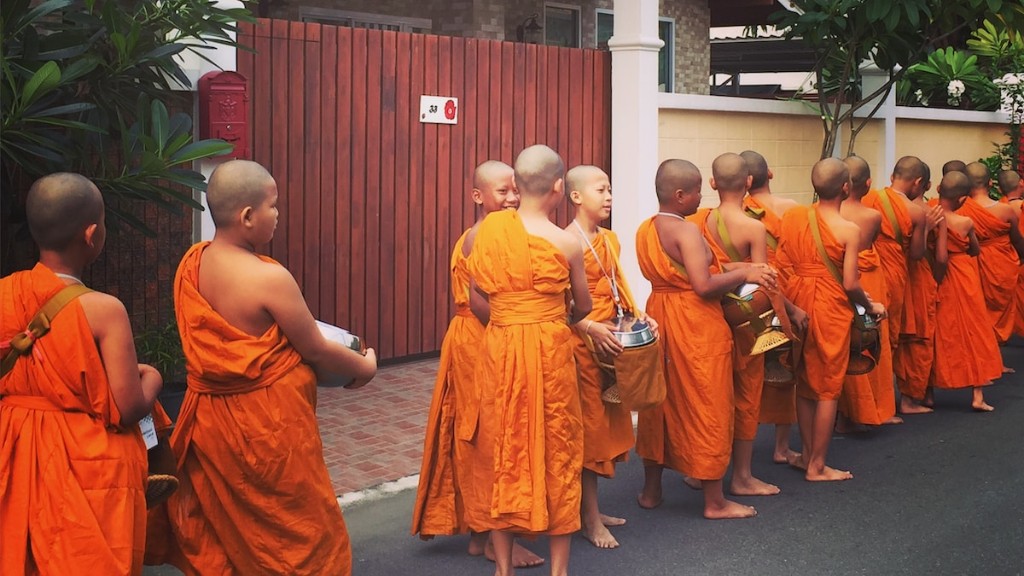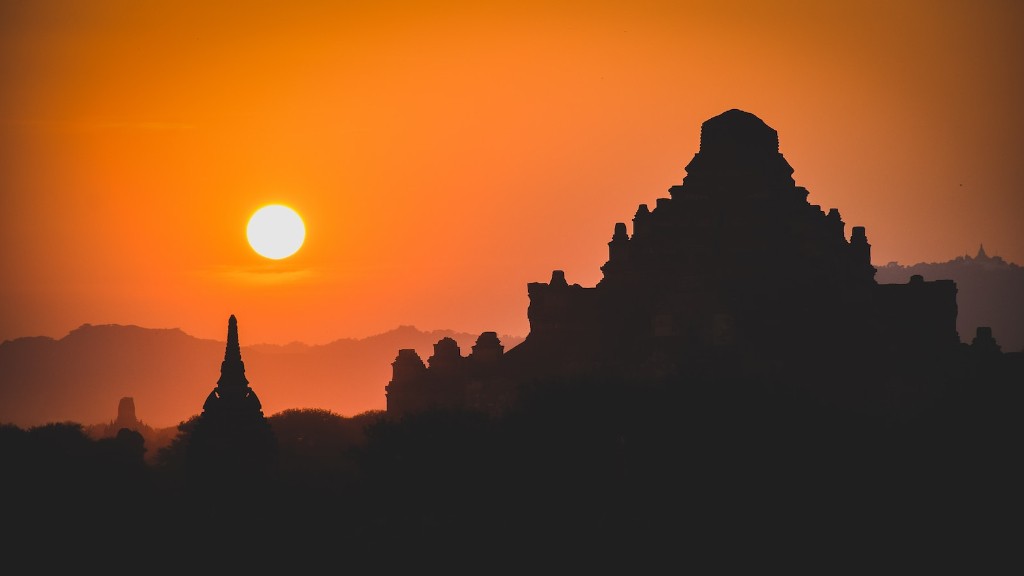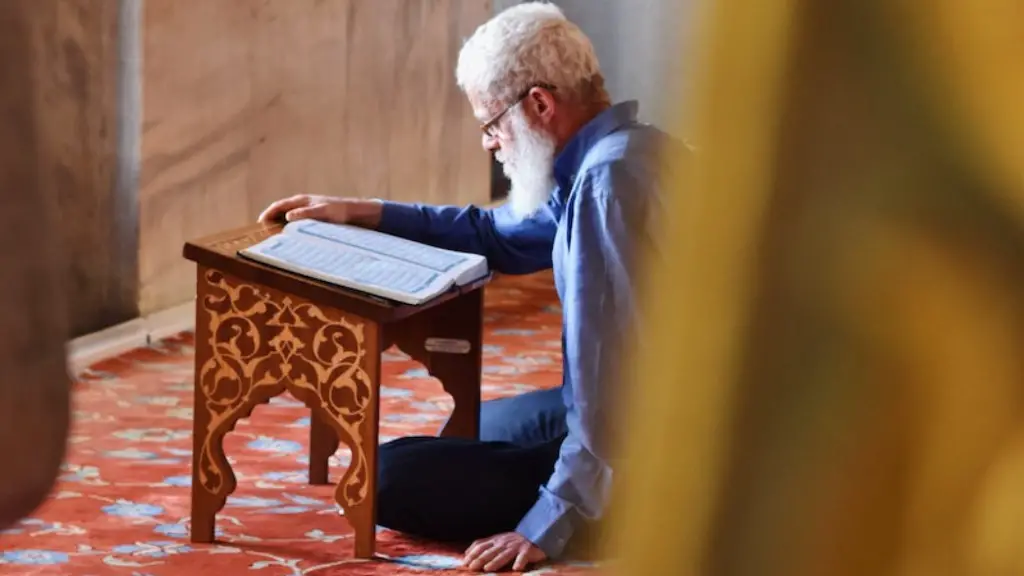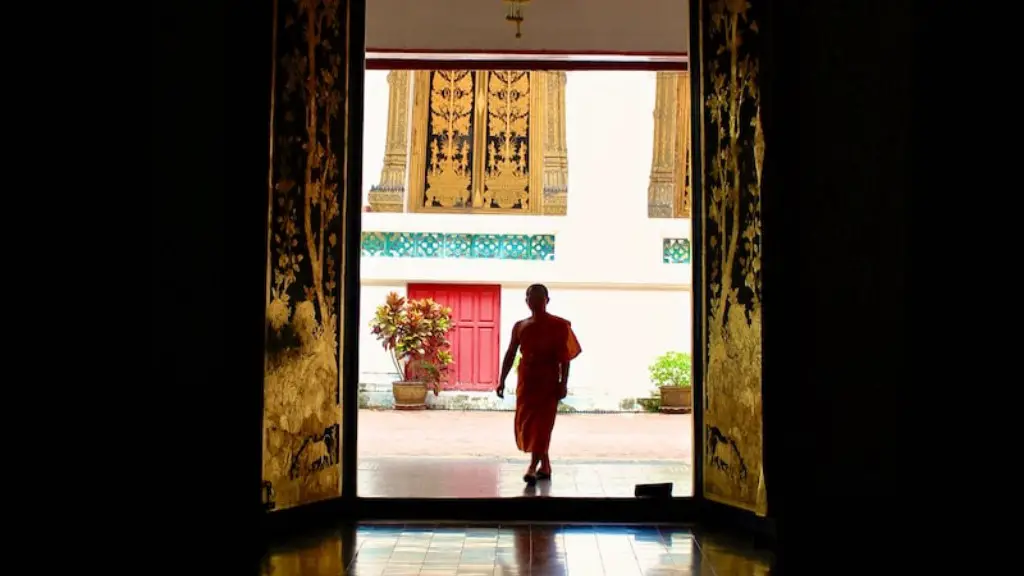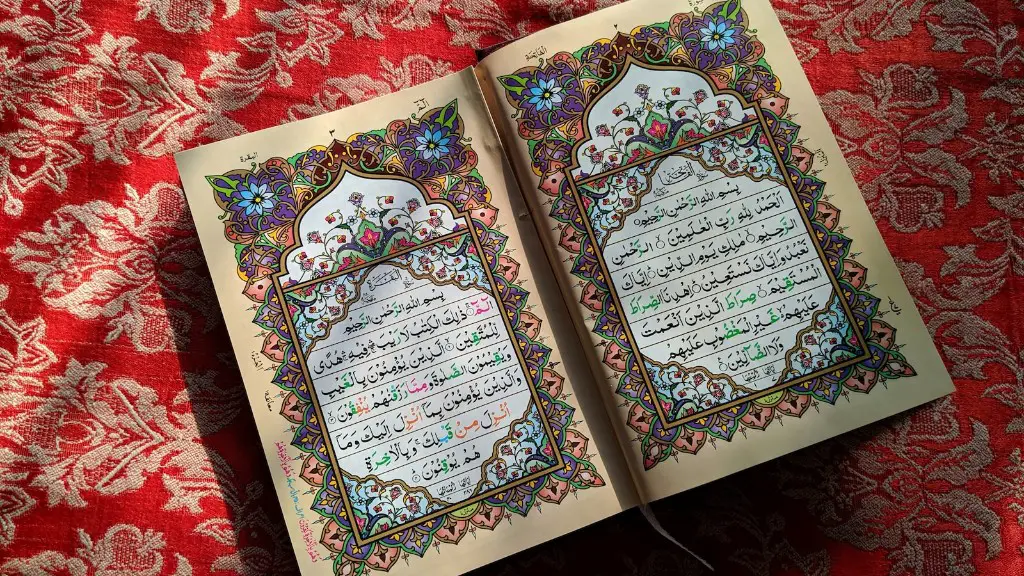In Hinduism, God is commonly referred to as Brahman, which is an all-encompassing principle of unity. It is believed to be both where everything comes from and to which everything eventually returns. Brahman itself has no gender. It is neither male nor female, but an encompassing symbol of ultimate reality.
Within Hinduism, however, there are gods and goddesses such as Vishnu and Shakti that have genders. Vishnu is a male god and Shakti is a female goddess. Each of these divine figures represent different aspects of Brahman and the Universe. As such, God is neither strictly male nor female.
Hindu scriptures, such as the Vedas, describe Brahman as both masculine and feminine. God is also seen as an incomprehensible being who transcends gender. Consequently, scholars have argued that the question of whether or not God is male or female is beyond human comprehension.
Furthermore, the idea of a divine gender is of no importance because it cannot be observed or measured through physical means. What matters, according to Hinduism, is that the divine exists, regardless of its gender. This idea is expressed in the famous Hindu saying, “Truth is one, the wise call it many names.”
Moreover, it is believed that Brahman is formless, eternal, and infinite. This means that it is beyond any type of physical form, including gender. Thus, in Hinduism, the concept of God has more to do with a higher level of consciousness than anything else.
Hinduism stresses that all gods are ultimately the same, and that each god is simply an incarnation of Brahman. This has led many Hindus to believe that gods and goddesses are merely manifestations of that higher truth, and thus it would be incorrect to assign a gender to the source of all things.
As such, while there are gods and goddesses of various genders in Hinduism, many Hindus believe that the ultimate reality is beyond gender. God is both male and female and neither male nor female. It is a force that transcends physical forms and can never truly be understood by humans.
Evolution of the Divinities
Hinduism has evolved over the centuries, making it difficult to pinpoint when the concept of a genderless God began to take shape. However, from the Rigveda, the oldest of the Hindu religious texts, it is clear that the concept of genderless Brahman has been around for many centuries.
Over time, the idea of a genderless Brahman became more and more popular, to the point where it became the central thesis of Hindu philosophy. The Upanishads, written centuries after the Rigveda, allude to a single ultimate reality – Brahman – that has no gender.
This genderless view of Brahman was further developed in the various Hindu philosophies, such as the Advaita Vedanta and the Vishishta Advaita. The main idea behind these philosophies was that there is a single ultimate reality that is beyond the physical world, and that this ultimate reality cannot be understood or defined by its gender.
Thus, while the idea of a genderless God was not universally accepted in Hinduism during its early days, it became a central part of Hindu thought over time. Today, most Hindus view God as beyond gender. This view is further exemplified by the fact that many Hindu temples feature both male and female deities.
Novel Beliefs
In recent times, some Hindus have asserted that Brahman does, in fact, have a gender. They argue that the Universe cannot be created from nothing and must therefore have been created by a male or female deity. They point to the fact that many religious texts, such as the Puranas, mention gods and goddesses.
Moreover, some sects of Hinduism, such as Shaktism, are strongly focused on the female energy of the divine. In Shaktism, the primordial energy is seen as feminine. This energy is seen as an active force in the Universe and is thought to be the source of all creation.
Furthermore, some Hindus view God as both male and female. They point to deities such as Ardhanarishvara, who is the combination of the god Shiva and his female consort Parvati.
Thus, while the majority of Hindus still believe that God is beyond gender, a growing number of Hindus have started to assert that God can be male, female, or both. This view is still a minority, however, and does not reflect the mainstream Hindu ideology.
Conclusion
In Hinduism, the question of whether or not God is male or female is a complex one. On the one hand, many Hindus believe that Brahman, or ultimate reality, has no gender because it is beyond physical forms and human understanding. On the other hand, some Hindus assert that the divine source of creation must be male or female.
At the end of the day, each individual Hindu will come to their own conclusion on the issue. Ultimately, the answer to the question of whether or not God is male or female in Hinduism depends on one’s religious beliefs and philosophical outlook.
Distribution of Power
Hinduism is based on the idea that ultimate power rests in the hands of the divine. This is reflected in the Vedic hymns, which contain invocations to the gods for protection, guidance and sustenance. This notion of ultimate power has been carried through the centuries, and is reflected in the fact that many Hindus believe in a God or a set of gods and goddesses.
However, this idea of a higher power is not exclusively masculine. For example, the Hindu god Shiva is a god of destruction and transformation, but he is often accompanied by the goddess Kali, a goddess who is associated with power and strength. This demonstrates that the power and authority of the divine is not limited to gender.
Moreover, the idea of a divine force as an all-encompassing concept has been increasingly emphasized in recent years. This view of the divine as an all-encompassing source of power and protection was highlighted in the Bhagavad Gita and has been increasingly accepted among many Hindus.
Consequently, Hindus generally believe that ultimate power lies beyond the binary gender roles of male and female. The divine is seen as a cohesive force that is beyond biology and physical forms.
Gender Equality in Hinduism
Hinduism generally views gender equality as a key aspect of the divine. This is illustrated in stories such as the Ramayana and Mahabharata, both of which feature male and female characters in positions of power, authority and leadership.
Moreover, many Hindu goddesses are seen as powerful agents in their own right. This can be evidenced in goddesses such as Kali, who is a feminine force that is often invoked as a protector, or Lakshmi, who is known as the goddess of fortune, beauty and fertility.
Additionally, many Hindus find strength in the yoga pose Ardha Chandrasana, which is known as the Half Moon Pose. This pose, which is practiced in many Hindu temples, is seen as a symbol of the integration of masculine and feminine energies. This is reflective of Hinduism’s view of gender equality.
Thus, it is clear that Hinduism values gender equality and sees the divine beyond gender. This view of the divine is reflected in its scriptures, its philosophical teachings, and its practice of yogic postures. Ultimately, Hinduism is a religion that encourages respect for all people, regardless of gender.
Symbolism of Gender
Hinduism views gender as a symbol that represents different aspects of the divine. For example, in the Ramayana, Rama and Sita are symbols of devotion and unconditional love. On the other hand, Shiva and Parvati represent the idea of duality, which is often seen in Hindu philosophy.
Moreover, many Hindus view the concept of gender holistically. They point to gods such as Ardhanarishvara, who embodies both masculine and feminine energies. This idea is further reflected in Hindu marriages, in which both partners are seen as equal.
Additionally, many Hindu gods and goddesses embody attributes that are considered to be both masculine and feminine. For example, the goddess Durga is known for her strength and power, but is also seen as compassionate and loving. Thus, Hinduism sees gender as a symbol of different aspects of the divine.
Thus, while some Hindus view God as male or female, the majority view God as beyond gender. God is seen as a symbol of both masculine and feminine energies, and ultimately represents an all-encompassing force of ultimate reality.
